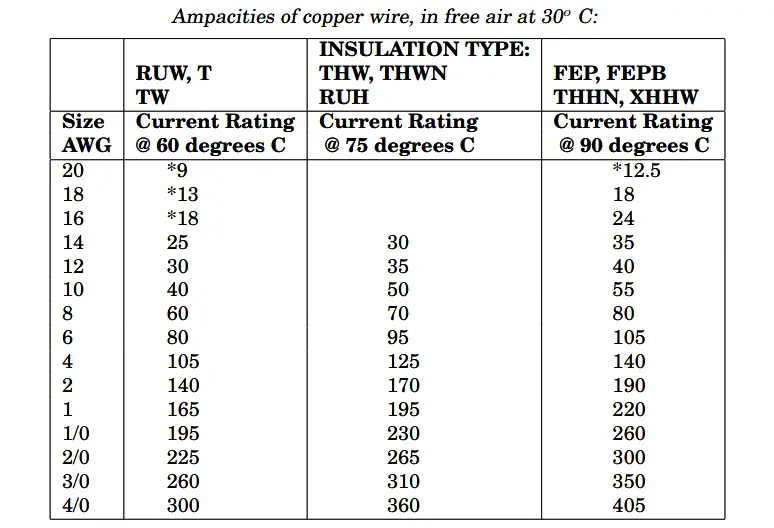So to be clear, you'd want the 12V row from the above chart, assuming the wire you're referring to is the input from your battery to the inverter.
P=EI or Watts=Volts*Amps. This formula is always true on each side of the inverter so 600W is either 50A at 12VDC (50 * 12 = 600) or 5A at 120V AC (5 * 120 = 600). Here's a clearer chart:
You always go "bigger" with wire sizes, so per the chart you would need a minimum 8AWG for the DC input to the inverter and a minimum 20AWG on the output, but that's ridiculous so your first answer is you can keep your 2AWG for this inverter, and use standard 14AWG (if you want) for the output. Inverters that small are usually not even hard-wired, so you'd probably be running an extension cord. It's so small you'd be fine either way.
If you want to work it the other direction, your 2AWG line from your battery can carry 140A. Let's derate that for safety, so call it 120A max. That's still 1440W - more than twice the size you were recommended to choose. You could push it to 1500W if you don't have enough danger and fire in your life (but it would probably be just-barely fine anyway) but a 1200W should be just about perfect, and there are tons of them on Amazon for short money - make sure you get a pure-sine-wave one with well-written fake reviews (not the cheapest ones with poorly-written fake reviews).
If your circuit doesn't have one already, it would be a very good idea to install a fuse or breaker on that 2AWG battery feeder line. You want to put it at or as close to the battery as you can - you can buy both "inline" and screw-mounted versions. Size this fuse to protect the WIRE, not you or the inverter. So for a 2AWG wire with a max ampacity of 140A you'd want probably a 120-130A fuse. Pick something between what your inverter will draw (its watts / 12) and the wire's max capacity (140 or less). I personally prefer fuses here over breakers, but if you do go with a fuse, buy 2-3 extra.
Post back if you feel you need more inverter capacity. If so, describe your loads (microwave, fridge, etc.) and do your best to look up their wattages for each item you want to run. Add all those up and again derate like 20%. Working in reverse, that can tell you what size inverter you really want, and from there, whether or not you need to re-run that feeder line.
Rerunning big wires in campers can be a huge PITA because they're often just-barely squeezed into tight spaces. If re-running it is a problem like that, you can add a box to hold your inverter very close to your battery. Sometimes just an oversized battery-box is all you need. This is often preferable because you can get short 1-3 foot "inverter cable" sets designed just for this purpose for $20-$30 online, with terminals already crimped on. Since AC takes so many fewer amps for the same wattage, adding an AC line to the inverter is often a lot easier. YMMV.

